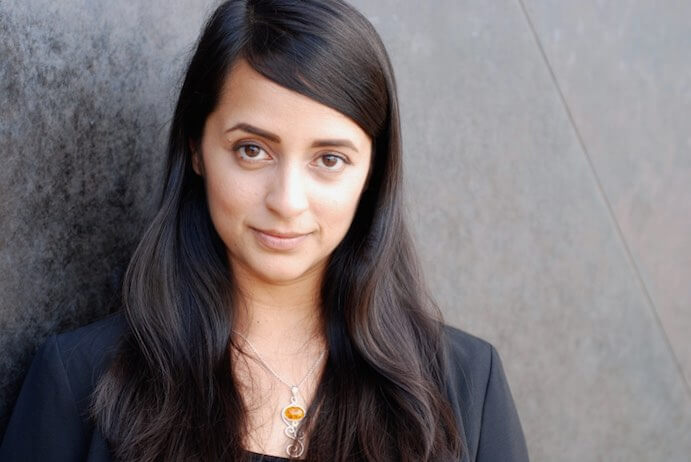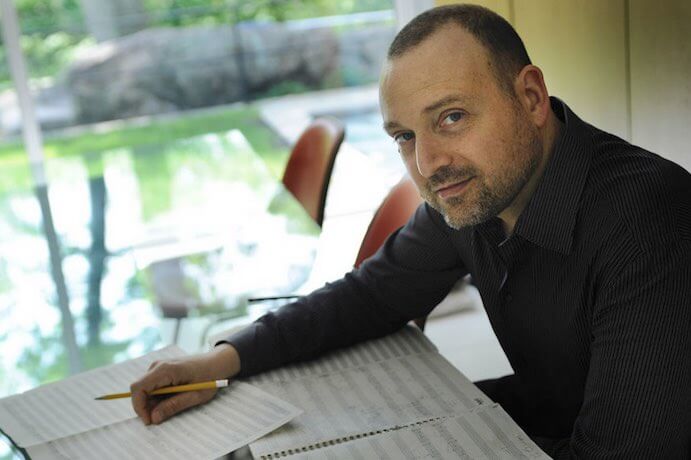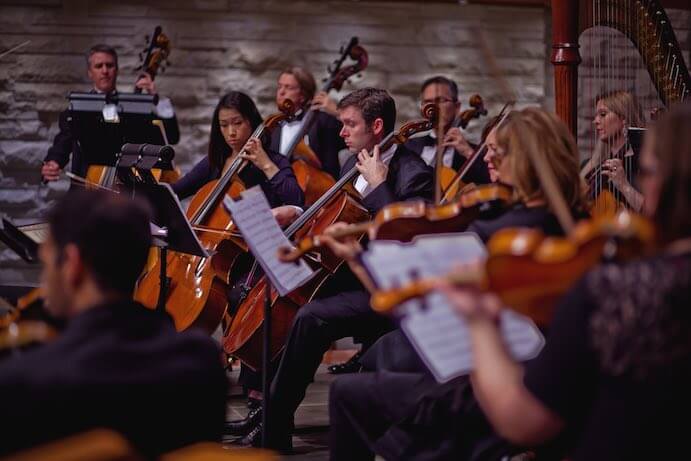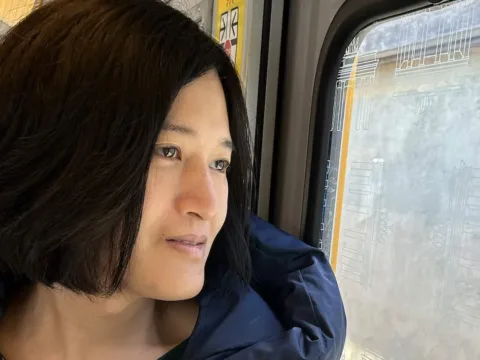Visions Take Flight is the remarkably assured debut album by the Houston-based River Oaks Chamber Orchestra (ROCO), released in November 2018 on Innova Recordings. ROCO was founded in 2005 and has commissioned over 75 works of new music. According to the liner notes of the attractively-packaged double CD set, the repertoire for Visions Take Flight was democratically chosen by polling ROCO’s musicians, and the result was a lineup of works all written for the group in the last 10 years by composers Karim Al-Zand, Reena Esmail, Derek Bermel, Anthony DiLorenzo, and Marcus Maroney.
Visions Take Flight begins with Al-Zand’s Visions from Another World (2008), an apt choice to introduce the capabilities of the ensemble. In the playful first and third movements, lively, simple melodies are passed around the instrumental families of the orchestra, which plays with energy and precision under the direction of conductor Mei-Ann Chen. In the evocative second movement, “Funeral Cortege of the Silkworm,” muted strings slowly unfold shimmering melodies while pairs of insectoid winds burble and leap about over an insistent, dirge-like march rhythm. Al-Zand based his suite on three quasi-Surrealist engravings by French illustrator J.J. Grandville, which depict anthropoid bugs and sea creatures engaged in inscrutable rituals.
Teen Murti for String Orchestra (2013) draws inspiration from composer Reena Esmail’s study of Hindustani music. This engaging ten-minute piece makes use of drone, heterophonic textures, ragas, and lusciously thick glissandi and a heavy vibrato that lend a vocal quality to the myriad solos in the piece. While these characteristics may derive from Hindustani music, the piece’s luminous, extended triadic harmonies also bring to mind later 20th-century American works like Jennifer Higdon’s blue cathedral.

The inspiration for Derek Bermel’s Murmurations (2015) for string orchestra lies in the movement patterns of flocks of birds. Each of the piece’s three movements are rigorously restricted in their materials, yielding the impression that the music follows the laws of nature as much as the traditions of musical structure. The first movement comprises mainly trills and whole tone scale fragments that swoop up and down en masse. At one memorable point, the scale fragments descend microtonally, evoking the Doppler effect.
The second movement is an exquisite meditation, a post-minimalist, placid kin to Mahler’s Adagietto from Symphony No. 5 and Barber’s Adagio for Strings. The orchestra and recording engineers achieve a particularly beautiful tone quality here, with richly sonorous bass pizzicato arpeggios, layers of hushed, long-limbed melodies in the section strings, and a sweet, vulnerable solo violin. The final movement again sees the orchestra moving in blocks of sound, this time setting a brushy, almost mechanical stroke against a jaunty bass polyrhythm. It’s a slightly anti-climactic, yet still effective finale to the best piece on Visions Take Flight.

The second disc begins with Anthony DiLorenzo’s 19-minute Jabberwocky (2014), a tone poem inspired by Lewis Carroll’s poem of the same name, which is dramatically read during the last few minutes of the piece. The work owes a strong stylistic debt to the music of film composers like John Williams and starts with an air of mystery and suspense, featuring tremolo strings, clarion horns, rolling timpani, and a melancholy flute solo. Then, the pulse kicks into gear, and we’re off on an adventure. The trouble is that musically, we don’t get far. While it’s easy to imagine this score accompanying a fantastical tale, its swooning chords and rousing textures can’t make up for a lack of melody, counterpoint, development, or formal structure.
Marcus Maroney’s three-movement Concerto for Chamber Orchestra (2016) is a thoughtful, deliberate work inspired by the form of Béla Bartók’s Concerto for Orchestra and the harmonic language of Jean Sibelius. The first movement has the feeling of an overture and begins with a driving low string rhythm and a rising gesture in the clarinets and oboes. However, the texture quickly evaporates, and while continuing to develop this material, the rest of the movement explores subtle, striking pairings of instruments. The second movement is a quasi-theme-and-variations with some pleasantly unexpected tempo shifts and a use of the horns reminiscent of Brahms. The third movement passes around an insistent ostinato before culminating in six highly dramatic knocks on the timpani and the piece’s anguished climax. More introverted than the rest of the music on Visions Take Flight, this piece rewards careful listening.

ROCO’s original recording date was preempted by Hurricane Harvey, and the resulting delay led the ensemble to commission Anthony DiLorenzo to write the album’s final work, Anthem of Hope: Houston Strong (2017), to commemorate the city’s resiliency after the storm. The cause is admirable and the music effective at evoking feelings of pride and determination, but it’s a shame there isn’t more musical substance here than major chords, swelling strings, and brassy fanfares.
In the end, though, there’s more than enough substance to make Visions Take Flight an impressive debut. It is unusual to see an orchestra of any size make its first recorded statement a collection of new music, let alone all self-commissioned works. The performances throughout are full of verve and musicality, and the technical quality of the recordings is excellent. One can only hope that ROCO’s next recording will maintain this high level of music-making and devotion to new music.
























